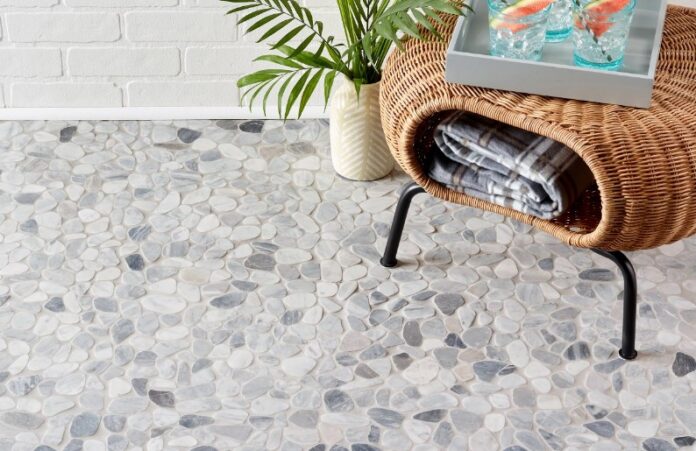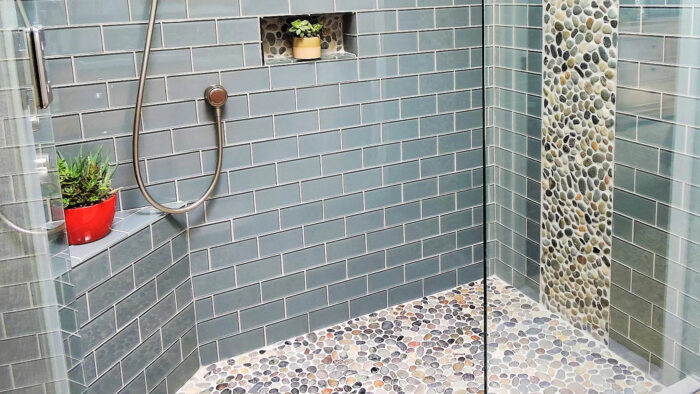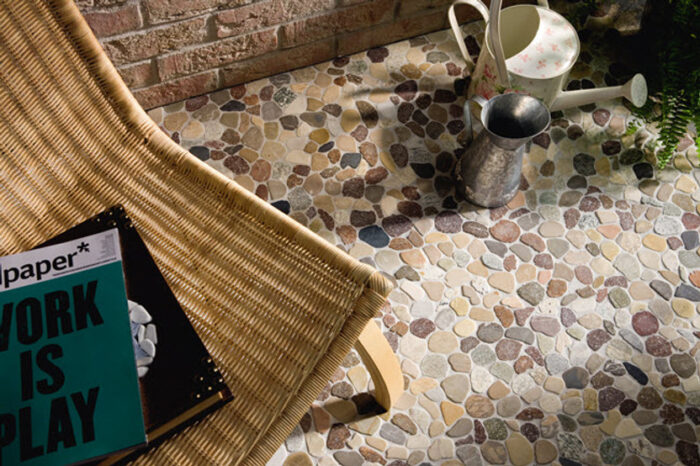
A unique and attractive option for both indoor and outdoor spaces, brings the beauty of nature into our homes and workplaces.
This type of flooring, made from smooth pebbles embedded in a resin or concrete base, offers a distinct texture and aesthetic that can complement a variety of design schemes.
However, like any material choice, pebble flooring comes with its own set of benefits and drawbacks.
In this article, we’ll explore these aspects in detail, providing a comprehensive overview to help you make an informed decision.
Benefits of Pebble Flooring

Not only does pebble flooring have a unique appearance, but it also has several useful benefits.
Aesthetic Appeal
The natural beauty is undeniable. Each installation is unique, with varied colors, sizes, and shapes of pebbles creating a one-of-a-kind look that can’t be replicated with conventional flooring materials. This organic appearance can add warmth and character to a space, making it feel more inviting and connected to the natural world.
With its inherent versatility in design, pebble flooring can be utilized in a diverse array of settings, encompassing bathrooms, kitchens, patios, and garden paths. This floor tile option blends seamlessly with various architectural styles, enhancing spaces with its unique texture and aesthetic.
The natural color variations in the pebbles serve to complement a wide spectrum of decor schemes, infusing spaces with added depth and texture, thereby enriching the overall design.
Durability and Comfort
The durability is remarkable. It is a great option for crowded locations as it can withstand a lot of foot activity. The natural stone can tolerate spills, stains, and moisture when coated properly, so it will not deteriorate over time and keep its look.
Despite its hard surface, pebble flooring can be surprisingly comfortable underfoot. The smooth, rounded pebbles create a massage-like effect, which can be particularly enjoyable in barefoot areas like showers or pool surrounds.
A green option is pebble flooring. The materials are abundant and natural, frequently obtained from beaches and riverbeds with no effect on the environment. By decreasing the need for manufactured flooring solutions that need more energy and resources to generate, the use of pebbles as a flooring material may support sustainable construction practices.
Drawbacks of Pebble Flooring

Despite its many advantages, pebble flooring also has some limitations that are worth considering.
Installing it can be more complex and time-consuming than other flooring options. The process involves carefully placing and adhering individual pebbles to the surface, followed by grouting and sealing. This labor-intensive installation can result in higher costs, both for materials and professional labor.
Conclusion
Many designers and homeowners find pebble flooring to be an enticing option because it provides a unique combination of durability, beauty, and environmental friendliness. Its aesthetic and functional advantages must be carefully assessed against the difficulties of installation, upkeep, and accessibility.
You can decide if this is the best option for your area by taking these things into account, ensuring that the end product satisfies your expectations for both functionality and style.








